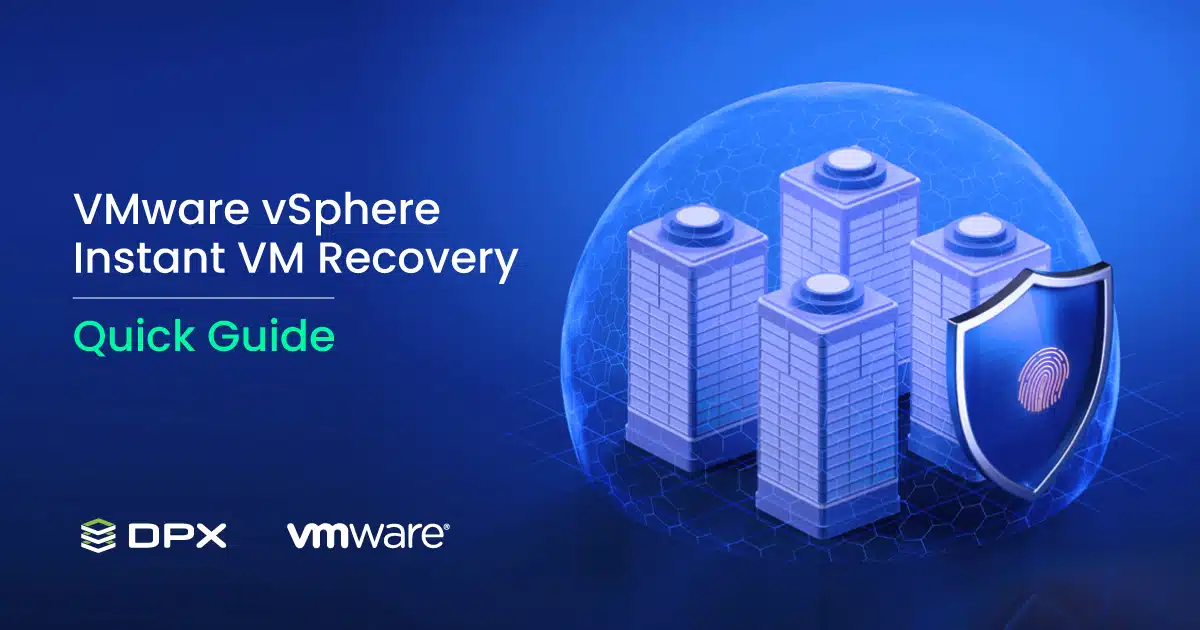Instant VM Recovery on VMware vSphere: A Comprehensive User Guide

Downtime in the IT world is akin to a flat tire on a busy highway; it’s unexpected, inconvenient, and slows down your journey to your destination. For IT professionals, ensuring the wheels of virtual environments keep turning, especially in VMware infrastructures, is paramount. The key to a smooth ride? Instant recovery options that act like a pit crew, getting systems back up to speed with minimal delay.
The Essentials of Instant Recovery for VMware vSphere
Instant recovery is a non-negotiable feature in the modern IT landscape. It’s the process that allows virtual machines (VMs) to be brought back online rapidly after a failure. By skipping the time-consuming data transfer to primary storage, it is possible to achieve this by running the VM directly from the backup storage. The result? A dramatic reduction in Recovery Time Objectives (RTOs).
Consider a financial services firm that processes thousands of transactions per hour. A VM failure could mean significant financial loss. With instant VM recovery, the VM can be back online within minutes, ensuring that transactions continue to flow smoothly.
Snapshots for Instant VM Recovery
The process begins with the backup application creating a snapshot of the VM, which captures its state and data at a specific point in time. In the event of a failure, the backup software can instantly boot the VM from this snapshot within the backup storage.
Users and applications can access the VM while it’s still running from the backup location. Meanwhile, the backup software works in the background to migrate the VM back to the primary storage. This seamless process ensures that operations can continue with little to no downtime. This solution has a wide range of benefits like:
- Reduced Downtime: By enabling rapid restoration of services, instant recovery minimizes the impact of outages on business operations.
- Enhanced Flexibility: It allows IT teams to perform system maintenance and updates with less concern about prolonged downtime, knowing that they can quickly revert to a previous state if necessary.
- Improved Productivity: Minimizing downtime means less disruption for end-users, maintaining productivity levels across the organization.
VM Replication and Failover
Replication involves creating an exact copy of VMs on a secondary host. This replica stands by, ready to take over at a moment’s notice, ensuring that services continue without interruption. Failover is switching from the primary VM to its replica in case of a failure. Replication is a cornerstone of disaster recovery planning, ensuring that a recent copy of critical VMs is always available in a different location.
Imagine a healthcare provider with critical patient data systems. If the primary VM hosting these systems fails, the replicated VM on a secondary host takes over without skipping a beat, ensuring that patient care remains uninterrupted.
Beyond the Basics: Advanced Instant Recovery
While the fundamental principles of instant recovery are straightforward, the technology is anything but basic. Advanced features like Changed Block Tracking (CBT) and application-consistent snapshots ensure that recovery is not only fast but also accurate, preserving the integrity of the data and applications.
Catalogic DPX: Your VMware Safety Net
Catalogic DPX fortifies VMware environments with swift, block-level data protection and instant VM recovery, ensuring minimal downtime. Its granular recovery options and replication capabilities provide precise and reliable data restoration, essential for maintaining business continuity.
With added defenses against ransomware and seamless cloud integration, DPX offers a comprehensive, user-friendly solution for safeguarding virtual infrastructures. This robust platform is tailored to meet the demands of dynamic IT ecosystems, delivering peace of mind with its advanced, yet accessible, data protection features.
Be Always Prepared with Catalogic DPX
In the world of IT, preparedness is power. Instant recovery options empower organizations to face VM failures with confidence, knowing that their systems can be restored with minimal disruption. By leveraging tools like Catalogic DPX, businesses can ensure that their VMware environments are resilient, responsive, and ready for whatever comes their way.

